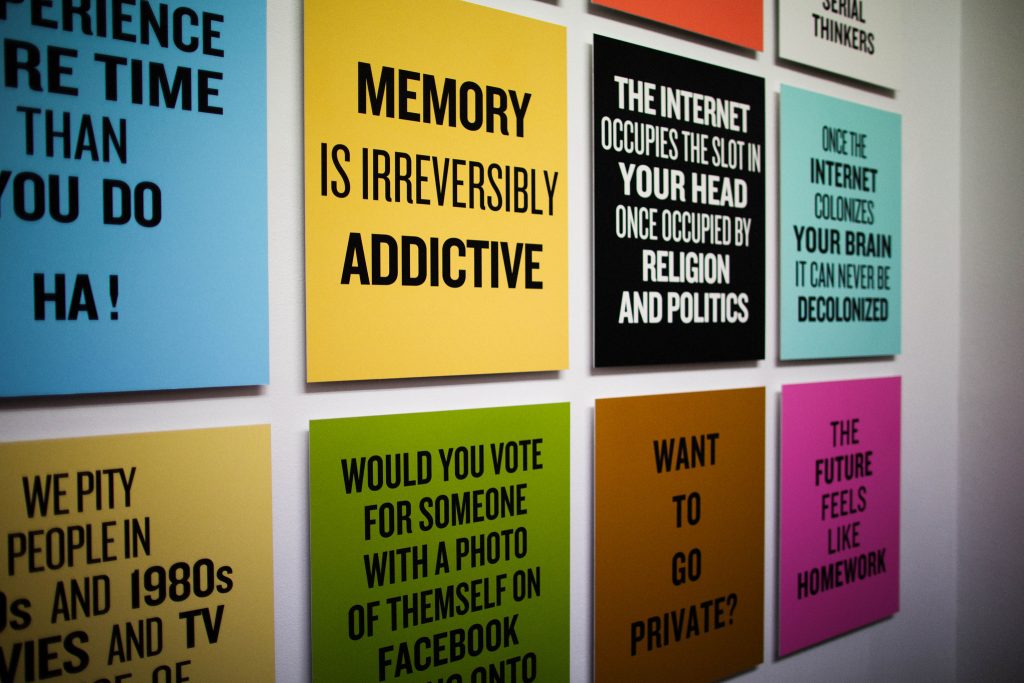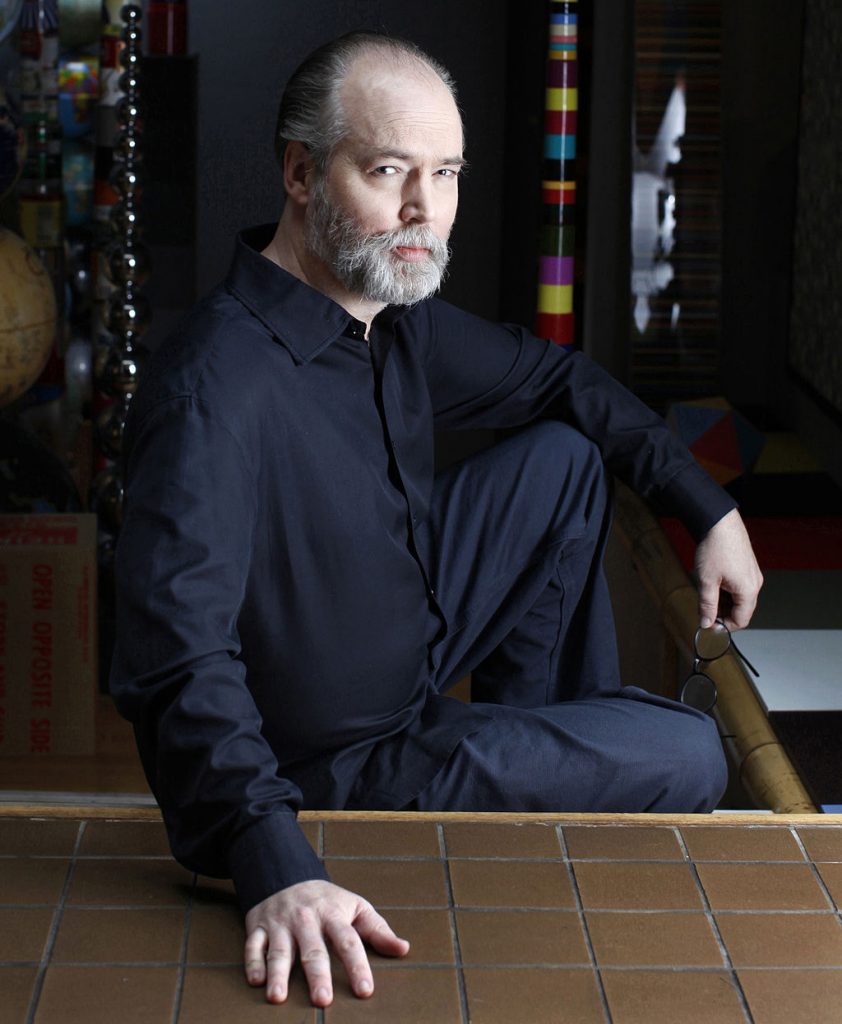Shannon Smyrl
I Miss my Pre-Internet Brain
Lives are No Longer Feeling like Stories
—Douglas Coupland, Slogans for the 21st Century, 2011-2014
McLuhan foresaw a fluid melting world of texting, email, YouTube, Google, smartphones and reality TV. Most of the content of any of these media is pure crap. But what’s spooking us all is the inevitable message of these new media: what will be the psychic fallout of these technologies on our inner lives?
—Douglas Coupland, “Why McLuhan’s Chilling Vision Still Matters Today”
Douglas Coupland’s 2009 novel Generation A exposes and probes core cultural anxieties related to isolation, mass commercialism, and environmental destruction—threats that feel imminent in our current digital world.

Slogans for the 21st Century by Douglas Coupland. Photograph by Lena Vasilkuva / transmediale, CC BY-NC-SA 2.0, via Flickr.
These days, we think, we shop, and we share through the web; we construct our sense of who we are in each post, share, purchase, and click-to-play. But, while our desire for social media, online shopping, and video consumption may seem insatiable, culture critics like Coupland are concerned with the consequences. To what extent is our digital life isolating us from others and from our own physical environments? And with this isolation, how do we understand our own responsibilities to ourselves and to our communities? Can we distinguish our role as citizens in a community from our role as consumers in a global economy?
These big questions have increasingly come to define our cultural moment and are being explored in the fields of education, psychology, sociology, computer sciences, and the arts. As we engage with Coupland’s novel, we can consider the uniquely literary ways in which it approaches these core cultural questions and the issues they raise, particularly in its focus on the power of storytelling.
Douglas Coupland is a prolific culture critic, author, and visual artist who first captured attention with his 1991 novel Generation X. He returns frequently in his work to the interconnected themes of storytelling and identity against the backdrop of mass culture and technology. Works with thematic connections to Generation A include his novels Generation X (1991) and j-Pod (2007), his 2010 Massey Lectures (and the companion novel, Player One: What Is to Become of Us), and his visual exhibit Slogans for the 21st Century, 2011-2014.
As a work of speculative fiction, Generation A is set in a plausible near future in which bees are extinct, apples and air travel are scarce, and power has been consolidated in the hands of the agricultural and pharmaceutical industries. On the surface, the novel reads like a paperback thriller. Bees mysteriously reappear to sting five characters around the world who are then whisked away by unknown forces to be studied in isolation. When released, the characters—unable to return to their old lives—are drawn to each other and so are willingly led by the mysterious scientist, Serge, to convene on Haida Gwaii, where finally the mystery of the narrative is revealed.
As you study Generation A, look beyond this surface to consider how the thriller narrative is linked to the novel’s larger concern with storytelling. Because, ultimately, the novel is a story about storytelling, structured as five interconnected narratives, each with embedded “campfire” stories the characters tell each other. In the end, the characters’ sharing of stories is integral to the novel’s outcome.
Questions to Keep in Mind While Reading

Douglas Coupland. Visit his website here. Douglas Coupland, CC BY-SA 3.0, via Wikimedia.
- Digital Culture. Coupland’s novel reinforces prevailing social concerns around experiences of disconnection, isolation and alienation in digital culture. Do you agree or disagree with his assessment of what digital culture is doing to us? Are there other ways to think about how new media makes possible new forms of connection and relationships?
- Speculative Fiction. Social critique is a key function of speculative fiction. How plausible do you find Coupland’s imagined world? What kind of evidence can you find in our own society to support his vision of the future? What or who are the targets of social critique in Coupland’s novel? Who has power in this imagined future? (For more Canadian speculative fiction, check out the works of authors like Margaret Atwood, Cherie Dimaline, William Gibson, Nalo Hopkinson, and Larissa Lai, amongst others.)
- Storytelling. We experience the novel’s emphasis on storytelling both in content and form. How does the narrative structure of embedded stories shape our experience of the novel? What thematic and formal connections develop between the different narratives? Do these connections change over the course of the novel?
- Identity and Digital Space. The bee stings are the catalyst for narrative development. When we read fiction, we want to identify those places of crisis that cause action or change; it’s here we can uncover the underlying question the novel wants to explore. Each of the five narrators, when chosen by the bees, is seeking some form of self-expression and connection to community in a digital world. How is digital communication represented in this novel? What connections are made between digital and physical space? How do the narrators move between physical and digital space to sustain their relationships?
Works Cited
- Coupland, Douglas. Generation A. Toronto: Vintage Canada, 2009. Print.
- —. Slogans for the 21st Century, 2011-2014. Daniel Faria Gallery, Toronto.
- —. “Why McLuhan’s Chilling Vision Still Matters Today.” The Guardian 20 July 2011. Web. 29 Apr. 2016.








 ©
©